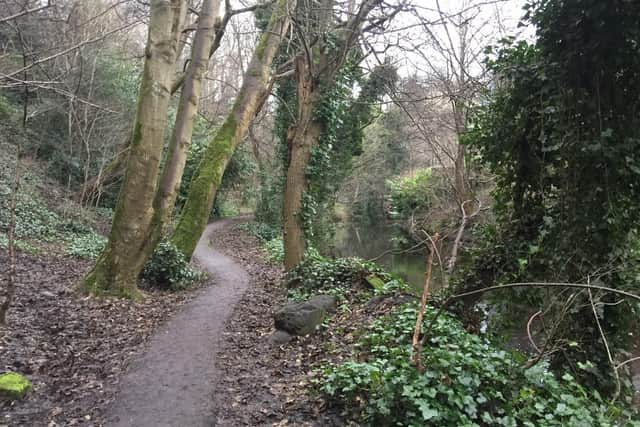Will Edinburgh fix what just might be ‘best commute in the world’? – Ian Johnston


One of the first things I was delighted to discover was the difference between my daily commute down south and the new one.
Advertisement
Hide AdAdvertisement
Hide AdIn London, getting to work usually involved a 50-minute journey using three or four overland and Underground trains while playing an involuntary game of sardines with complete strangers. There must be fewer things that concentrate the mind on the need to make a change to your life when, for the umpteenth time, you find yourself standing in a stress position to avoid overly close physical contact.


So you can imagine my delight when I discovered that, in Edinburgh, my journey largely consisted of a 20-minute walk along the Water of Leith. For that period, you could easily imagine you were not in a city at all, but in a particularly pleasant part of the countryside.
In fact, I’d go as far to say that it might just be the best commute in the world. Clearly, I’ve not sampled every commute the world has to offer, but if anyone is running a competition or working up a “top ten”, it would be my nomination.
On my first trip in late autumn of 2017, I discovered the path was blocked by a barrier with a diversion in place through the nearby streets. A landslip meant that the section between Sunbury Bridge and the steps at Dean Path had been closed.
Advertisement
Hide AdAdvertisement
Hide AdOh well, I thought, I imagine it will be fixed in a few weeks or maybe a few months. But, time went by, nothing seemed to happen. Apart from one thing. It was pretty clear that the insubstantial barrier was being bypassed by some walkers. The response was to put in place a stronger structure. But it was no match for the lovers of a stroll along the banks of the Water of Leith.
However a third, much more substantial fence, almost military grade, was then installed and this proved to be too sturdy to be overcome. So people just went round it.
There are now rather amateurish steps cut into the mud bank that rises at the end of the latest fence. Walking around it last week, I was quite impressed having previously been put off going around after skidding about a bit. I met a middle-aged jogger and we exchanged polite hellos.
The landslip doesn’t appear to have moved over the past two years. The path is decidedly uneven in places and there’s a bit where you have to step over a hole in the path leading down to the water, but I wouldn’t say there was anything particularly dangerous. I should mention at this point that I have no expertise in landslips and the risks involved whatsoever so it may not be advisable to do what I did.
Advertisement
Hide AdAdvertisement
Hide AdAccording to the Water of Leith Conservation Trust’s website, the council is “in the process of investigating this issue”. “In the meantime we would like to request that public respect the closure, use an alternative route, and do not put themselves at risk,” it says. Oops.
At a time when council budgets are under considerable pressure, it’s probably fair enough if a short section of path is not a massive priority. And yes we can just follow the fairly short detour. But I thought I’d write this just to make the point that the Water of Leith is a particularly wonderful part of Edinburgh – something I appreciated more on my return to the city – and it would be a terrible shame if the path continues to remain in its current truncated state for much longer.